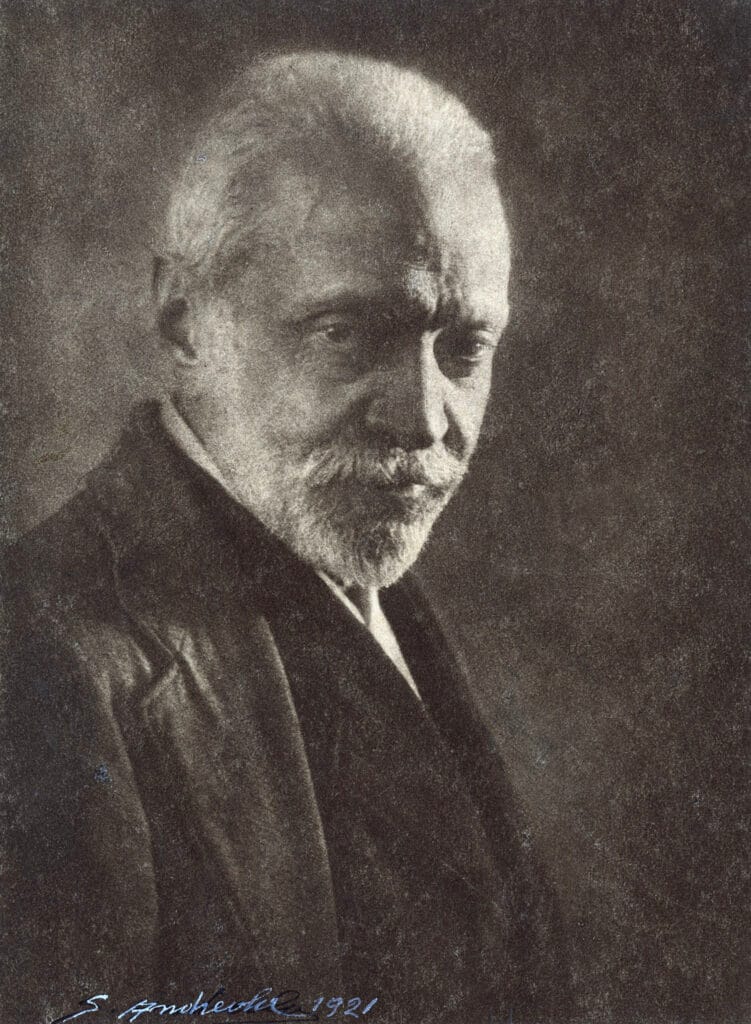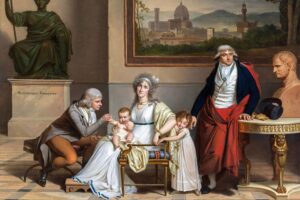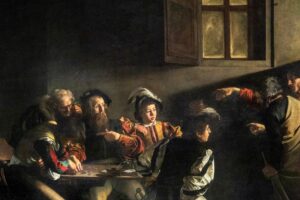The Cherries – Gaetano Bellei, c. late 19th–early 20th century
In a sun-drenched courtyard overflowing with green, The Cherries by Italian painter Gaetano Bellei offers more than sweetness — it celebrates the timeless joy between generations. Painted in Bellei’s familiar style of affectionate realism, this heartwarming scene transforms a simple moment into a lasting memory of family, play, and love.
The Scene Before Us
At center, an elderly man — cheerful and mischievous — raises a basket of cherries above his head, just beyond the reach of three eager children. They swarm around him like laughter itself, tugging on his coat, climbing onto his knees, reaching with small, determined hands. His smile is wide and indulgent, glowing with the quiet pride of a grandfather who knows he is their entire world, if only for the moment.
The background glows with warm stone and grapevines, creating a scene soaked in sunlight and life. Bellei’s mastery lies in these very details: the folds in fabric, the twinkle in the man’s eyes, the tumble of curls, the soft blur of a distant orchard gate. Every stroke feels lovingly placed, as if the artist painted from memory.
The Deeper Meaning
This isn’t just a cherry game — it’s a celebration of the grandparent-child bond, wrapped in the light of summer. The basket, held aloft, becomes a symbol of the gifts elders pass down: joy, stories, protection, play. The children’s laughter, in turn, is their gift back.
There is no lesson here, no chore — only the rich sweetness of time shared. The elder does not correct, instruct, or restrain. He joins. He becomes the game. And in doing so, Bellei reminds us that the love between generations is not always spoken — it’s shown in gestures, in giggles, in the shared chase for a basket of cherries.
A Moment Caught in Time
The scene may be Italian, rustic, and of its time — but the feeling is universal. Anyone who has run into a grandparent’s arms, been lifted up to pick fruit from a tree, or heard an old voice say “Catch me if you can” will recognize the magic here.
This is the kind of memory that stays — not in detail, but in feeling. Bellei captures it for us: a golden afternoon, three joyful children, and one elder at the heart of it all. Time slows. Love ripens. And everything is held — briefly — in a single, laughing reach.
About Artist

Gaetano Bellei (born January 22, 1857, Modena, Italy – died March 20, 1922, Modena) was an Italian painter best known for his genre scenes, portraits, and religious works. He completed his artistic training at the Academy of Fine Arts in Modena under Adeodato Malatesta and further honed his skills at Rome’s Accademia di San Luca, the French Academy, and the Spanish Academy. Bellei exhibited widely in Italian cities like Turin, Milan, and Rome, as well as internationally in London at the Royal Academy in 1882. He taught at the Academy of Modena from 1893 until his late years.
Artist Style and Movement
Bellei worked primarily within the genre painting tradition, focusing on everyday scenes of rural life and intimate family moments, often featuring elderly people and children. His style blends excellent technical skill with a narrative sensibility that captures human emotions and interactions vividly and tenderly. Though rooted in academic tradition, some of his works showed influence from realism and symbolist tendencies, and he experimented occasionally with Art Nouveau and divisionism techniques. His paintings balance naturalistic detail with a warm, sometimes sentimental portrayal of Italian peasant life.
Artwork Profile / Notable Works
- The Cherries: A classic genre scene depicting a simple, joyful moment centered around sharing or enjoying cherries, embodying Bellei’s gift for capturing warm human interactions.
- The Happy Kitten (“Il micino fortunato”): Exhibited in 1885, this painting brought Bellei commercial success by illustrating a playful, heartwarming scene with a kitten that he reproduced in several variations.
- Resfa: A symbolist-inspired work with darker tones that initially caused controversy but later earned recognition as a significant contribution to modern art in Modena.
- The Port of Livorno: Demonstrates Bellei’s engagement with pointillist and divisionist brush techniques, capturing lively scenes with vibrant details.
- Religious paintings such as the altarpiece of the Redeemer for the parish of Zocca and the Blessed Cottolengo for the Rangoni chapel in Bomporto show his versatility beyond genre painting.
Gaetano Bellei remains an important figure in late 19th and early 20th-century Italian art, renowned for his ability to depict intimate scenes of human emotion with refined technical skill. His genre paintings continue to be appreciated for their narrative warmth and realism, providing a window into everyday Italian rural life and the emotional bonds within families.



